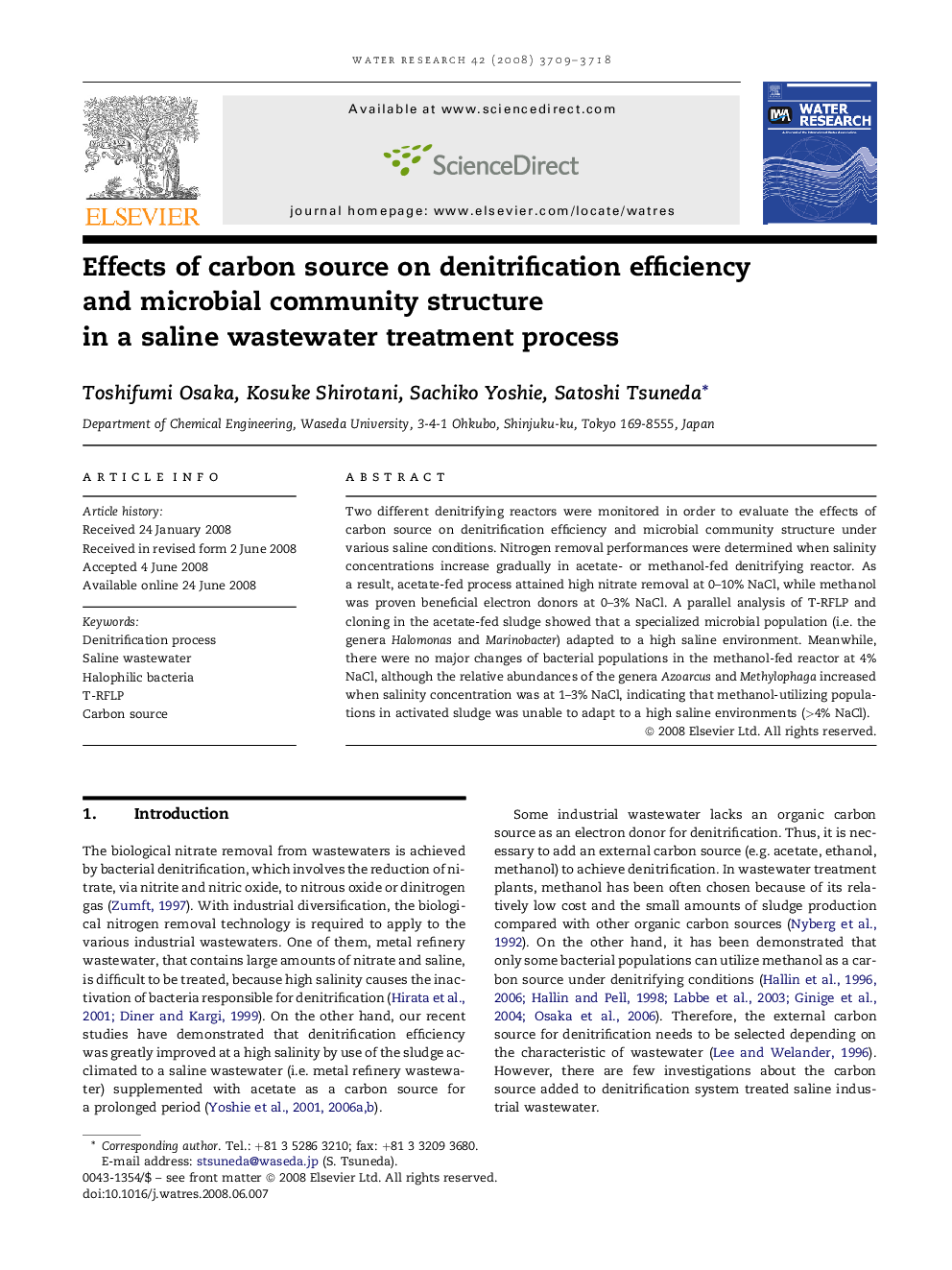| Article ID | Journal | Published Year | Pages | File Type |
|---|---|---|---|---|
| 4485962 | Water Research | 2008 | 10 Pages |
Two different denitrifying reactors were monitored in order to evaluate the effects of carbon source on denitrification efficiency and microbial community structure under various saline conditions. Nitrogen removal performances were determined when salinity concentrations increase gradually in acetate- or methanol-fed denitrifying reactor. As a result, acetate-fed process attained high nitrate removal at 0–10% NaCl, while methanol was proven beneficial electron donors at 0–3% NaCl. A parallel analysis of T-RFLP and cloning in the acetate-fed sludge showed that a specialized microbial population (i.e. the genera Halomonas and Marinobacter) adapted to a high saline environment. Meanwhile, there were no major changes of bacterial populations in the methanol-fed reactor at 4% NaCl, although the relative abundances of the genera Azoarcus and Methylophaga increased when salinity concentration was at 1–3% NaCl, indicating that methanol-utilizing populations in activated sludge was unable to adapt to a high saline environments (>4% NaCl).
